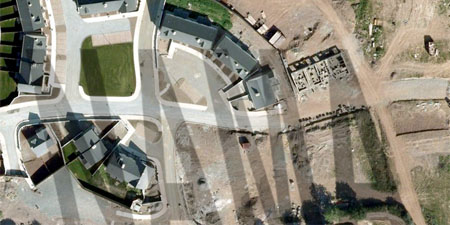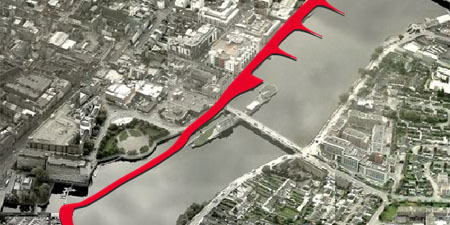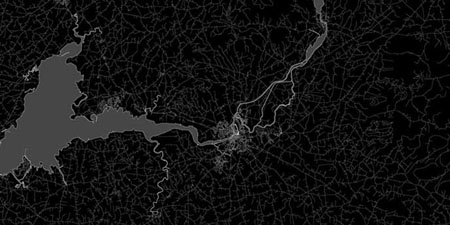Design and Irish Streets
by Alan Mee
According to the UK’s Manual for Streets (2010), streets and roads make up around three-quarters of all public space in the UK. While there is no equivalent figure available for Ireland, it is quite likely, given the proportionally higher spending on motorways in recent times here, that our figure is even higher. A Colloquium on the forthcoming Irish Manual for Streets, held at Dublin Castle in mid-November, was an opportunity for consideration of design issues concerning streets in this country. The Manual is partly complete and the event sought feedback to the Project Team, which, in an innovative move, includes staff from Fingal County Council and South Dublin County Council, as well as officials from the Departments of Transport, and Environment and Local Government.
Opening the event, Ciarán Cuffe, TD, Minister of State with special responsibility for Sustainable Transport, Horticulture, Planning and Heritage, recalled his introduction to politics and the connection to road design. He had initially become active in the movement to oppose road widening in the 1980s in inner city Dublin, and subsequently was elected to Dublin Corporation as a Councillor. He said it was his “first introduction to the technical aspects of road design, some of which needed to be questioned in order to save historic structures and street patterns in the medieval heart of the city”.
The proposed Manual may be considered to be late in arriving, considering the amount of spending on roads and motorways during the boom, but in fact very little of that money was going into new streets. Another aspect concerns the narrow band of the carriageway network to which the Manual appears to relate, new streets. Like the recent Urban Design Manual, which “focuses on the issues presented in housing schemes in the 30-50 units per hectare density range”, there is arguably a lack of national guidance for design at many of the other scales around and under architecture, both in infrastructure and urbanism. A question arises about the authorship of new streets in the design stage, and whether guidance should address the designer’s role. It is generally acknowledged that multi-disciplinary teams of designers including landscape architects, architects, urban designers and engineers contribute significantly to a well-designed public realm, but the ideal training, background and role of design team leader has not emerged culturally here to date, with most assuming that road design engineers would be the design team leader as well as lead designer. In fact, as was demonstrated by the Colloquium, the role of the street as social, economic and movement space is quite distinct to that of the road.
The street vs road debate has special resonance in Ireland, where, as the Minister said in the opening address, “a lot of Irish people remember markets, events, and a relaxed life on the streets in our towns and cities until relatively recently”, implying that a memory of the value of what was lost, together with good design, could help to restore the social and environmental value of these defining public spaces. In Ireland, it could be argued, we have many situations where a design manual is needed more than in other jurisdictions; the bland suburban estates, the junctions of inner city motorways with historic street patterns, dead and privatized laneways, killer one-way systems, and others. Possibly a document with a wider focus could be considered at some point, a “Movement Manual”, dealing with all aspects of movement, including pedestrian, pushbike, car and LUAS. This could serve architects and others as a sort of national Metric Handbook or Neufert for the spaces beyond buildings. An aspect which could be included is the maintenance of streets and roads, surely a significant contributor to accidents, particularly for cyclists in the last few years, as large potholes appear in the carriageway. The consideration of management, consolidation and shrinkage of the road/street network could also be addressed, given that we have one of the highest coverages of asphalt per capita on the planet; do we really need it all ? A system for qualitatively evaluating existing and proposed carriageway would also be extremely useful. Many involved in the designed environment professions in Ireland are not comletely clear on the differences between streets and road. In an ideal world, all of each would be measured, assessed for quality, and in the case of streets enhanced and improved, or in the case of many roads, upgraded to street status over time. Some unique specificities of Irish streets, particularly historic ones, could also be usefully included.
In general, the proposed Irish Manual for Streets will be extremely welcome for all of those connected to the design of the built environment in Ireland. It is likely to be immediately adopted by Local Authorities, in particular as a guide in the assessment of proposals, forming the agenda for the equivalent of pre-planning meetings for new streets. It is due for publication during 2011, and further information is available at manualforstreets@transport.ie.
This Article appeared in Architecture Ireland Issue 254



